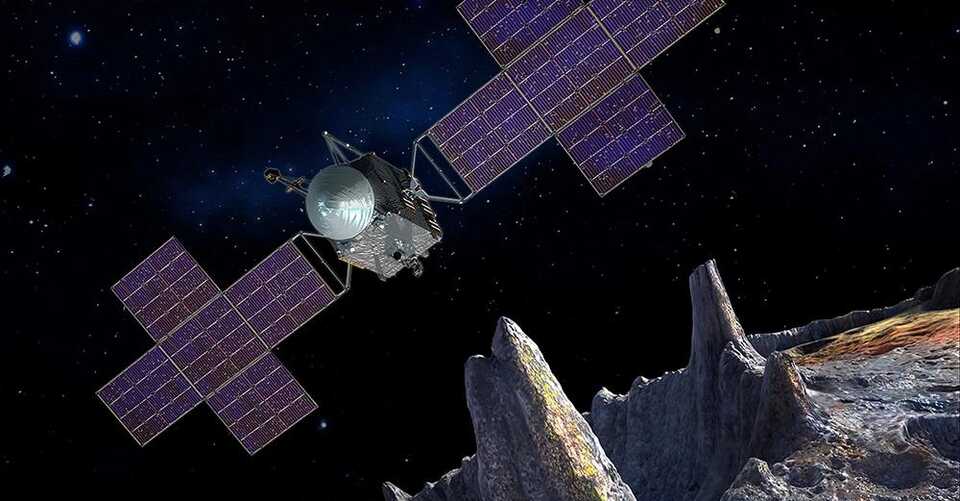A study published by The Planetary Science Journal in 2020 suggests that Psyche is made almost entirely of iron and nickel. This metallic composition sets it apart from other asteroids that are usually comprised of rock or ice, and could suggest it was originally part of a planetary core. That would not only represent a momentous discovery, it’s key to Psyche’s potential astronomical value: NASA scientist Lindy Elkins-Tanton calculated that the iron in the asteroid alone could be worth as much as $10 quintillion, which is $10,000,000,000,000,000,000 (yes, a 20-figure sum). For context, the entire global economy is worth roughly $110 trillion as of writing. However, more recent research out of the University of Arizona suggests that the asteroid might not be as metallic or dense as once thought. Psyche could actually be closer to a rubble pile, rather than an exposed planetary core, the research claims. If true, this would devalue the asteroid. NASA’s upcoming mission should settle the debate about Pysche’s composition for once and all.
Of course, Psyche isn’t the only valuable rock in space. NASA has previously said the belt of asteroids between Mars and Jupiter holds mineral wealth equivalent to about $100 billion for every individual on Earth. Mining the precious metals within each asteroid and successfully getting them back down to earth is the hard part. Then you have the whole supply and demand conundrum that could drive the price of specific metals up or down. We’ll leave the complexities of space mining for another day.
If Psyche is, in fact, the leftover core of a planet that never properly formed, it could reveal secrets about Earth’s own core. The interior of terrestrial planets is normally hidden beneath the mantle and crust, but Psyche has no such outer layers. The asteroid’s mantle and crust were likely stripped away by multiple violent collisions during our solar system’s early formation. By examining Psyche, we can further understand how Earth’s core came to be. The mission could also provide insights into the formation of our solar system and the planetary systems around other stars.









Comments are closed.